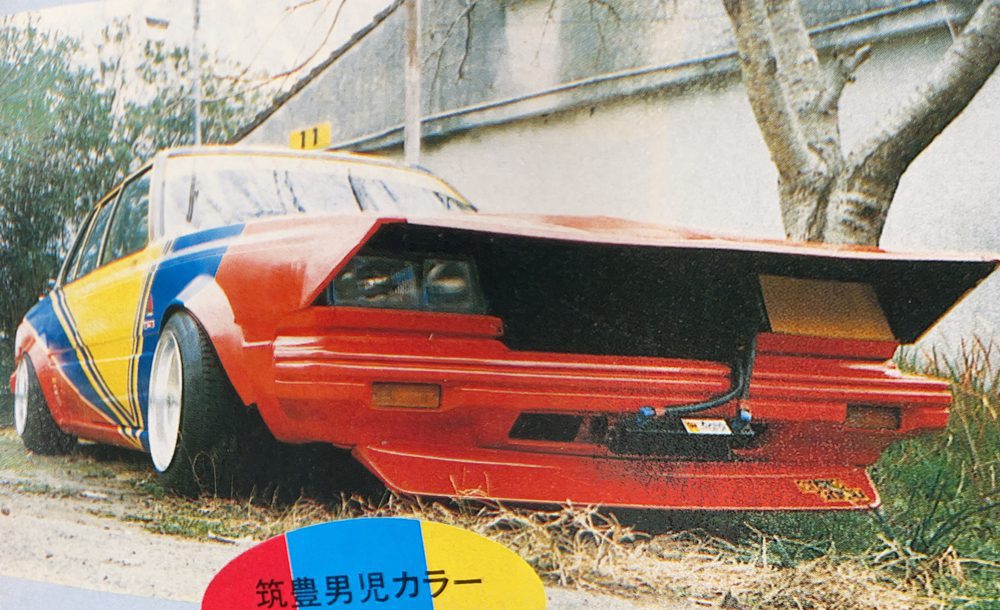While the Tokyo area (and Ibaraki) were visiting the Fuji GC and the start of Grachan and Chibaragi styling, Fukuoka area was experimenting with their own styling.
Minkara user rez30 had a simple list of what defines a Fukuoka styled car.
- Solid vehicle height that barely touches the ground. This is achieved by using small wheels and no suspension (no-sus orノーサス).
- “Thin body.” The aero chosen is the chin spoiler ( チンスポ ), slit spoiler ( スリットスポイラー), and trunk spoiler referred to as board panel (板ッパネ) from a hakosuka Skyline. The use of a long nose ( ロングノーズ ) is more effective for this look. Having a flashy “works” fender is usually not used because it makes the car wider. The same goes for side steps. Fender vents and swapped tail lights were another common trend for body work.
- “Wide force.” While keeping the body thin, the wheels are still aggressive and wide. The tires should be stretched ( 引っ張りタイヤ ), and the wheels should slightly protrude the fender. Pulling the fenders or extending the lip slightly is ok, but classic works fenders like the RX-3 are often not used.
- “Racing feeling.” The cars paint should give it a race car feeling. The color should be something bright, along with painting the entire car. Multicolored knuckle lines (also sometimes referred to as fukuoka color) are also good. Putting big logos like “FET” or “Bridgestone” are also effective.

This isn’t to say that there aren’t other styles that are built in Fukuoka, but this is the style that they are known for. Often you will see it referred to as “Fukuoka Specification.” Some of the earliest examples of this style came about in 1991.

Some early examples of Fukuoka style consist of cars like this 1983 Toyota Soarer 2.8GT. Some of the features include the itapane wing, chin spoiler, slit spoiler, 25cm long nose, modified trunk to look like a Nissan Leopard, Nissan Skyline Japan tail lights, and some Nissan C130 Laurel side markers. The wheels are SSR Mark II 9J front, 11.5J rear. Some of the other mods include no-sus, 8cm shock shortening, TRD clutch, Ferrari 300mm steering wheel, and a TRD bucket seat. Sporting the multi-colored “knuckle-line.” This might be the first recorded use of this color scheme. (If someone has any more information dating further back please email me.)


A 16 year old from Fukuoka built this Toyota Crown (MS110 I believe) in 1991. It has some of the Fukuoka stylings like the long nose, chin spoiler, and itapane wing. The color is listed as Chikuho Boys Color (筑豊男子色) which is made up of this red, blue and yellow. Other noticeable features are the aggressive SSR Mark I wheels and Nissan Fairlady Z S130 tail lights.


This 1980 Nissan Bluebird SSS features a 35cm long nose, an over-fender for a Toyota Corolla Levin, itapane wing, oil cooler. The wheels are SSR Mark III 9J front, 11J rear with CR88 tires. No sus, of course.
It is sometimes easy to confuse Hokkaido styling and Fukuoka styling as they share many similarities but are different. Some builders of the time moved from Fukuoka to Hokkaido and brought along their inspiration.